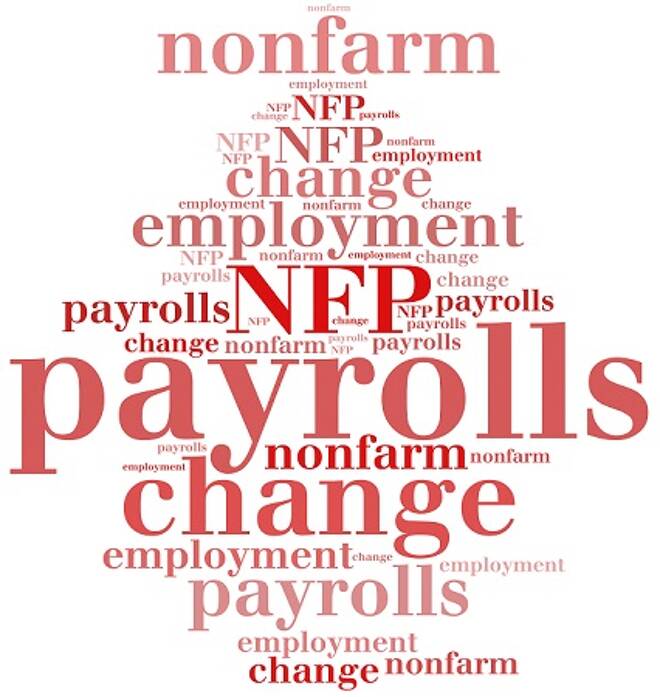Advertisement
Advertisement
Is the Dollar in for a Surprise? Nonfarm Payrolls and Wage Growth in Focus
By:
China's manufacturing sector weakened further to test risk appetite ahead of January's nonfarm payroll and wage growth figures out of the U.S.
Earlier in the Day:
Economic data released through the Asian session this morning included manufacturing and wholesale inflation numbers out of Australia, Japan’s job-applications ratio and January’s Caixin Manufacturing PMI out of China.
For the Aussie Dollar, the AIG Manufacturing Index rose from a revised 50.0 to 52.5 in January.
- Six of the seven activity indexes were in expansion in January, while on a downward trend since the 3rd quarter of last year.
- Export orders saw a modest improvement, up by 1.8 points to 52.1, with the new orders index up by 2.0 to 52.3.
- The employment index rose by 2.8 points to 51.1, while the average wages index fell by 1.5 points to 61.8
- The input price index fell by 2.9 points to 70.3. Selling prices rose by 5.6 points to 50.2.
- Three of the six sectors expanded in January, with two stable and one in contraction. Compared to the previous month, 5 of the 6 sectors saw weaker numbers.
The Aussie Dollar moved from $0.72723 to $0.72756 upon release of the figures that came out ahead of the wholesale inflation numbers, and China’s manufacturing PMI.
In the 4th quarter, wholesale inflation prices rose by 2%, year-on-year, easing from the 3rd quarter 2.1%. Quarter-on-quarter, wholesale prices rose by 0.5%, coming up short of a forecasted 0.6% and 3rd quarter 0.8%.
According to the ABS,
- The increase was attributed to rising prices received for heavy and civil engineering construction (+1.0%), building construction (+0.4%) and accommodation (+3.8%).
- Partially offsetting were falls in prices received for petroleum refining and petroleum fuel manufacturing (-10.6%) and bakery product manufacturing (-2.7%).
The Aussie Dollar moved from $0.72754 to $0.72704 upon release of the figures that preceded the PMI number out of China.
For the Japanese Yen, the jobs to application ratio held steady at 1.63 in December, which was in line with forecasts.
The Japanese Yen moved from ¥108.868 to ¥108.860 against the Dollar, upon release of the figures, before rising to ¥108.87 at the time of writing, up by 0.02% for the session.
Out of China, the Caixin Manufacturing PMI came in at 48.3 in January, falling short of a forecasted 49.5 and December 49.7. The PMI was the lowest since Feb-16.
- New orders were slightly subdued, though the weakness was attributed to softer domestic demand, with new orders from overseas rising in January.
- Workforce numbers fell further, but at the slowest pace in 9-months.
- The number of outstanding orders saw a modest increase in January.
- Business confidence saw a slight improvement, particularly for over the next 12-months, coming in at its highest since May-18.
The Aussie Dollar moved from $0.72528 to $0.72433 upon release of the figures, before sliding to $0.7241 at the time of writing, a loss of 0.44% for the session, data out of China doing the Aussie Dollar few favors.
Elsewhere, the Kiwi Dollar was down by 0.06% to $0.6912.
The Day Ahead:
For the EUR, it’s another busy day ahead on the economic calendar. Key stats include January manufacturing PMI numbers and preliminary January inflation figures out of the Eurozone.
Barring a revision to Germany’s prelim figures, focus may well be on Italy’s manufacturing sector numbers. The sector contracted in December and the markets will be looking for a bounce back at the start of the year. Inflation figures will have also have an impact. Forecasts are for softer numbers and a weaker EUR.
At the time of writing, the EUR was down 0.05% to $1.1442.
For the Pound, economic data due out later this morning is limited to January’s manufacturing PMI. Numbers in line with or weaker than forecast won’t be doing the Pound any favors.
We would expect the focus to remain on Brexit chatter, with a no-deal departure from the EU becoming an ever more likely outcome should the EU maintain their stance on negotiations.
At the time of writing, the Pound was down by 0.11% to $1.3094, with Brexit chatter remaining the key driver through the day.
Across the Pond, it’s a big day for the Greenback. Key stats due out later today include January’s unemployment rate, wage growth, and nonfarm payroll figures, the market’s preferred ISM manufacturing PMI numbers, the Markit Manufacturing PMI and finalized consumer sentiment figures.
The unemployment rate, nonfarm payroll, and wage growth figures will be the key driver on the data front. On the nonfarm payroll numbers, any revisions to December numbers would also need to be considered.
Outside of the labor market figures, the ISM manufacturing PMI will also have an impact. The market will be looking for clues on the direction of the economy at the start of the 1st quarter.
At the time of writing, the Dollar Spot Index was up 0.04% to 95.619.
For the Loonie, it’s a quiet day on the data front, leaving the Loonie back in the hands of market risk sentiment and the influence of today’s stats out of China and the U.S on crude oil prices.
The Loonie was down by 0.18% to C$1.3149, against the U.S Dollar, at the time of writing.
About the Author
Bob Masonauthor
With over 28 years of experience in the financial industry, Bob has worked with various global rating agencies and multinational banks. Currently he is covering currencies, commodities, alternative asset classes and global equities, focusing mostly on European and Asian markets.
Advertisement
